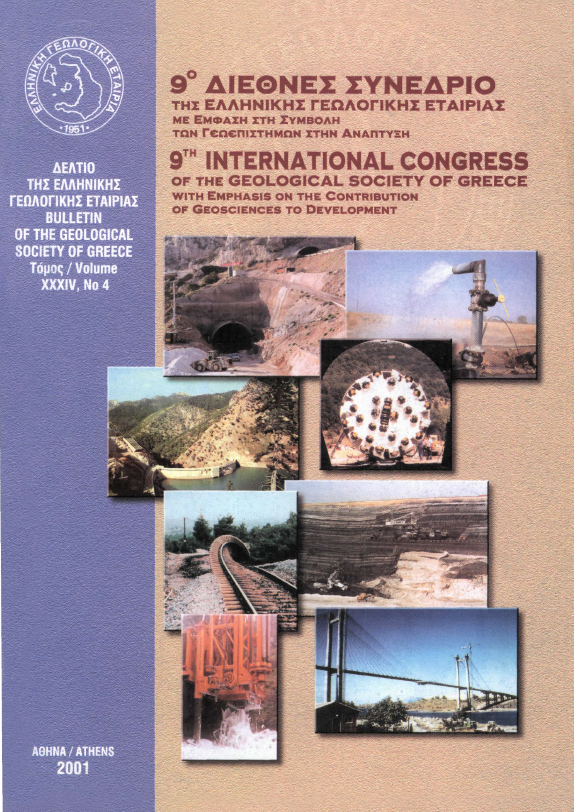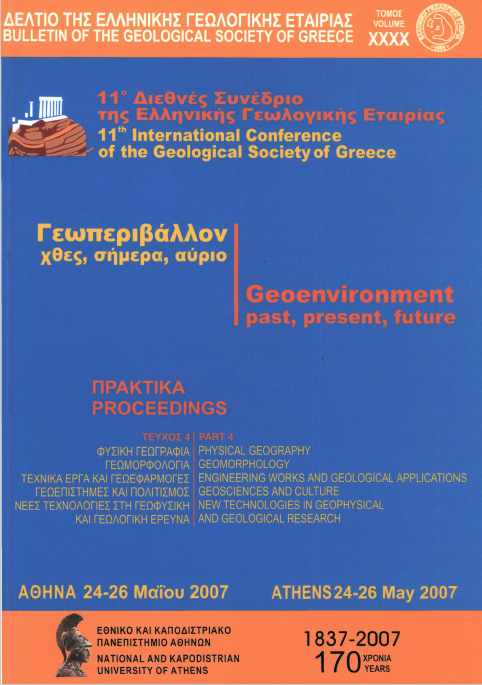INVERSION OF ELECTRICAL RESISTIVITY TOMOGRAPHY DATA DERIVING FROM 3D STRUCTURES
Abstract
In this work the effectiveness of 2D and 3D algorithms for inverting Electrical Resistivity Tomography (ERT) data deriving from 3D structures is studied. Further, an analysis of data-collection strategies in the case of 3D structures is being carried out. Dense 2D measurements are nconsidered a practical tool for mapping 3D structures given the current limitations in ERT hardware. To perform the tests 2D and a 3D inversion programs are used. Both schemes use a forward model based on a 2.5D and 3D finite element scheme respectively. For both the 2D and 3D cases a fully non-linear inversion scheme based on a smoothness constrained algorithm is used. The Jacobian matrix is calculated using the adjoined equation technique. Comparisons are being carried out by means of synthetic examples for 3D models and dense 2D measurements with their axis parallel to the X (X-lines) and/or Y (Y lines) directions. For the case of 3D structures and 2D inversion tests results illustrate that both X-line, Y-line measurements are required to delineate the modeling body. However, when 3D inversion is considered either Xline or Y-line measurements are adequate to produce good quality reconstructions of the subsurface. Overall, results clearly illustrate the superiority of 3D over 2D inversion schemes in the case of 3D structures both in view of quality and logistics. Despite the increased computational time required by 3D inversion schemes, good quality results can be produced. Further, 2D inversion techniques require effectively a double amount of measurements to produce acceptable results. The ongoing advancement of fast computers renders the described approach of combining dense 2-D measurement with 3D inversion practical for routine data treatment.
Article Details
- How to Cite
-
Tsourlos, P. (2004). INVERSION OF ELECTRICAL RESISTIVITY TOMOGRAPHY DATA DERIVING FROM 3D STRUCTURES. Bulletin of the Geological Society of Greece, 36(3), 1289–1297. https://doi.org/10.12681/bgsg.16472
- Section
- Geophysics

This work is licensed under a Creative Commons Attribution-NonCommercial 4.0 International License.
Authors who publish with this journal agree to the following terms:
Authors retain copyright and grant the journal right of first publication with the work simultaneously licensed under a Creative Commons Attribution Non-Commercial License that allows others to share the work with an acknowledgement of the work's authorship and initial publication in this journal.
Authors are able to enter into separate, additional contractual arrangements for the non-exclusive distribution of the journal's published version of the work (e.g. post it to an institutional repository or publish it in a book), with an acknowledgement of its initial publication in this journal. Authors are permitted and encouraged to post their work online (preferably in institutional repositories or on their website) prior to and during the submission process, as it can lead to productive exchanges, as well as earlier and greater citation of published work.










